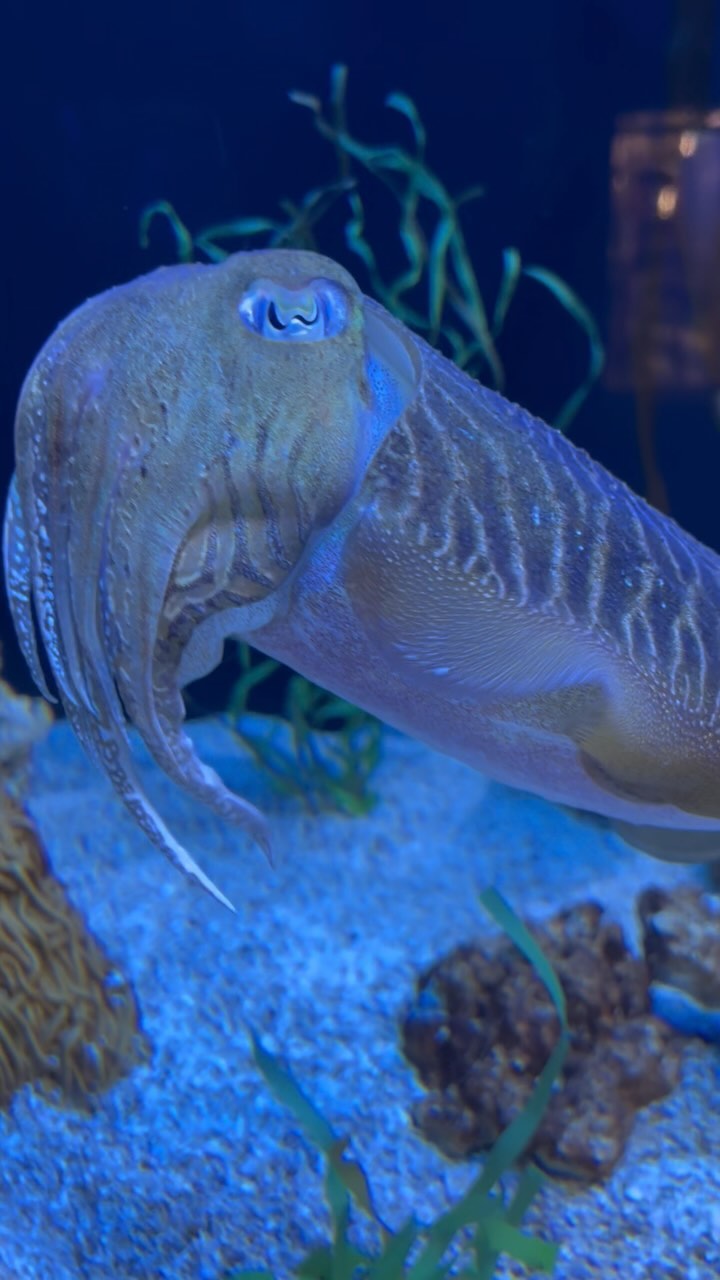- Cuttlefish’s Camouflage Mastery
- Intelligence and Brain-to-Body Ratio
- Unique Methods of Evasion and Survival Mechanisms
- Comparative Zoology and Cuttlefish Physiology
- Conservation Efforts and Impact on Marine Ecosystems
Cuttlefish’s Camouflage Mastery
Cuttlefish are often celebrated for their unparalleled camouflaging abilities, an evolution perfected over millions of years. These intriguing creatures can alter their skin color and texture to blend seamlessly with their surroundings, eluding both predators and prey. This adaptability is attributed to specialized skin cells known as chromatophores, which contain pigments that expand or contract to change color. Moreover, another layer called iridophores reflects light, adding to the complex and dynamic visual effect. This natural artistry not only aids in survival but is a remarkable display of biological engineering.
The cuttlefish’s skin holds an intricate mosaic of chromatophores, iridophores, and leucophores, each playing a distinct role. Chromatophores adjust to environmental cues, providing reds, yellows, and browns. Iridophores and leucophores contribute shimmering blues and greens, crucial for reflecting light underwater. This multi-layered skin system allows the cuttlefish to produce patterns like stripes, spots, or even mimic textures, enhancing their disguise. Understanding this detailed process offers insights into biomimicry, a field where human technology looks to nature for inspiration, such as in creating adaptive camouflage materials.
Intelligence and Brain-to-Body Ratio
One measure of an organism’s cognitive ability is its brain-to-body ratio, and cuttlefish possess one of the highest among invertebrates. This denotes a high level of intelligence, comparable to that of more complex organisms. Their nervous systems are advanced, enabling complex behaviors like learning, memory, and problem-solving. Experimentations have shown cuttlefish can navigate mazes, recall past events, and exhibit signs of future planning—abilities once thought exclusive to vertebrates.
The smart thinking of cuttlefish is underpinned by an anatomically sophisticated brain. Located around the esophagus, cuttlefish neurons are organized into lobes analogous to the human brain’s structure. Cognitive prowess in cuttlefish includes predatory tactics and evasive maneuvers. Studies reveal that they can distinguish between various predators and even remember past interactions. This advanced consciousness raises discussions about the cognitive capacities of invertebrates, challenging pre-existing notions about animal intelligence and pushing forward the boundaries of zoological and psychological studies.
Unique Methods of Evasion and Survival Mechanisms
Besides camouflage, cuttlefish are equipped with other remarkable survival strategies. One notable method is ink expulsion. When threatened, a cuttlefish can release a cloud of dark ink, creating a visual smokescreen to confound predators. This ink contains compounds that may also dull an attacker’s sense of smell, providing the cuttlefish a defensive edge during escape. Additionally, cuttlefish can enact jet propulsion by expelling water through their siphon, achieving rapid and sudden movements that enhance their elusiveness.
Cuttlefish also demonstrate an ability known as dramatic display—stark color changes intended to startle or intimidate predators. These sudden, striking patterns act as a bluff, giving the cuttlefish precious moments to flee. Another fascinating aspect is their ability to alter body shape, mimicking marine plants or rocks, showcasing their extraordinary adaptability. These evasion techniques indicate a high level of evolutionary refinement, marking cuttlefish as formidable survivors in their marine environments.
Comparative Zoology and Cuttlefish Physiology
When comparing cuttlefish to other cephalopods, such as octopuses or squids, several distinct physiological and behavioral differences are noted. While all cephalopods share traits like tentacles and advanced nervous systems, cuttlefish have unique attributes like their cuttlebone, a porous structure used for buoyancy control. This internal shell enables precise depth regulation, distinguishing them from their relatives who rely on other mechanisms.
Behaviorally, cuttlefish are known for their relative docility compared to more aggressive cephalopods like squids. Their complex social behaviors, mating rituals, and communication methods via changing colors and patterns are subjects of continuous research. Understanding these dynamics compared to other marine life provides broader insights into evolutionary biology and the adaptability of marine organisms in various environments.
Conservation Efforts and Impact on Marine Ecosystems
Cuttlefish play significant roles in their ecosystems and are integral to oceanic food webs. They serve as both predators and prey, influencing populations of various marine species. However, like many marine creatures, cuttlefish face threats from overfishing, habitat destruction, and climate change. Efforts are underway to study these impacts and develop conservation strategies to protect cuttlefish populations and their habitats.
Marine protected areas (MPAs) and sustainable fishing regulations are among the measures being promoted by conservationists. Research into the lifecycle and reproductive habits of cuttlefish also aims to enhance breeding programs, ensuring their continued survival. Public awareness and partnerships between governmental bodies, NGOs, and local communities are crucial for the long-term sustainability of these amazing creatures. By aiming to preserve the environments where cuttlefish thrive, broader marine conservation goals are also furthered, ultimately contributing to the health and stability of our world’s oceans.
Understanding and protecting cuttlefish not only preserves a wonder of nature but contributes to broader ecological balance and marine health. These curious creatures are truly ink-credible, deserving admiration and safeguarding for future generations to appreciate and study.
*****
Source Description
These curious creatures are INK-credible! ✨
Besides being masters of camouflage and experts at evading predators, cuttlefish also boast one of the largest brain-to-body ratios of all invertebrates! 🧠
•
•
•


